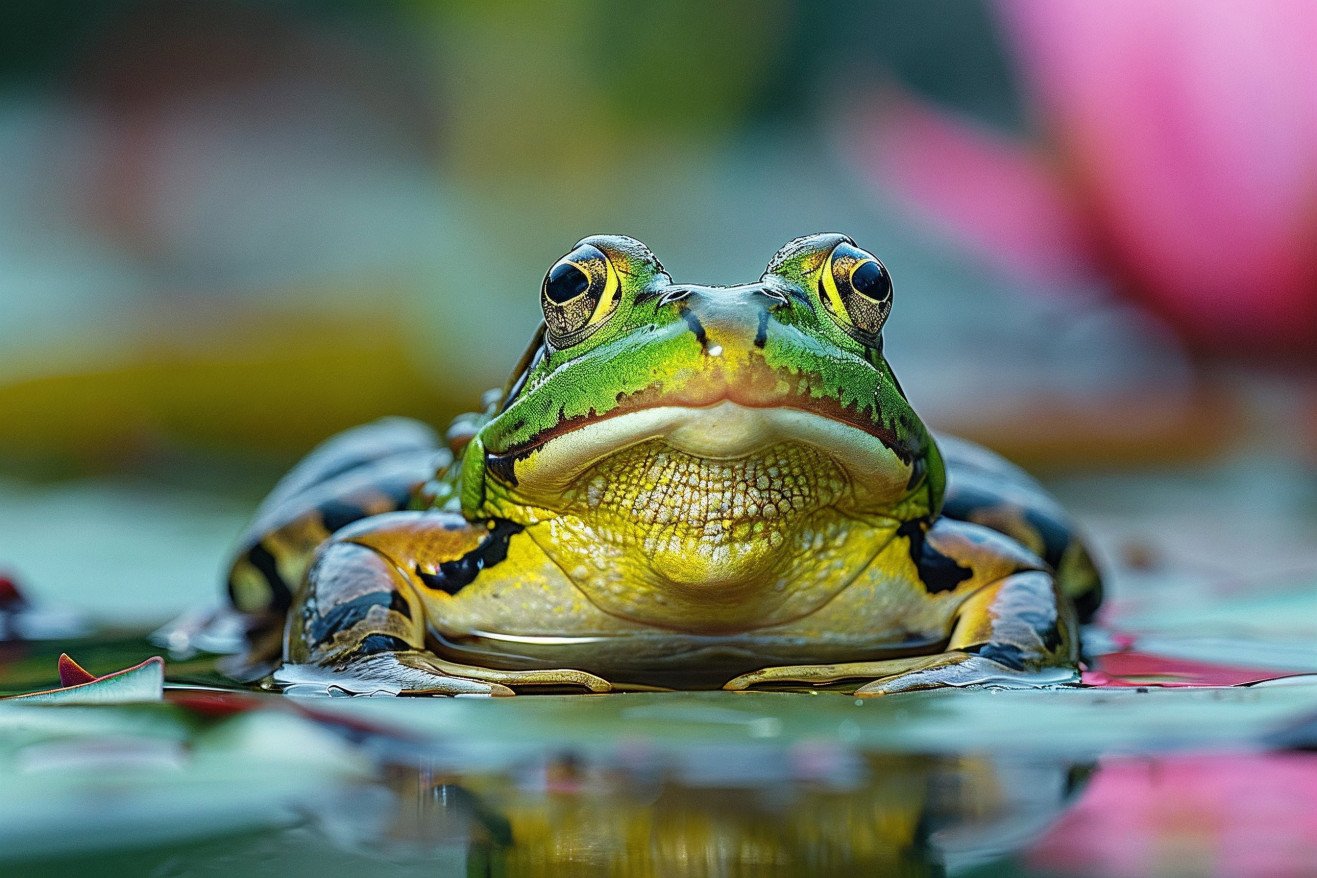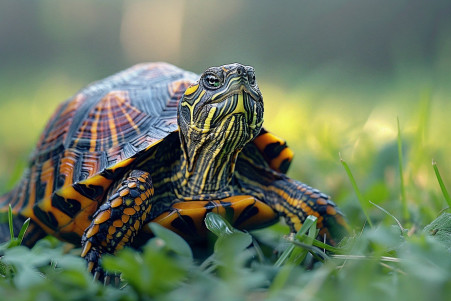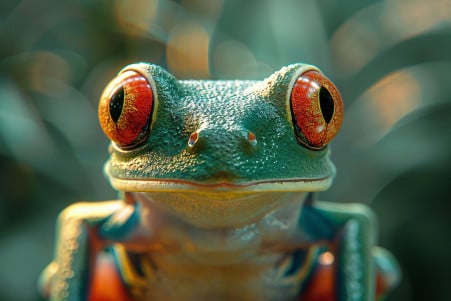Why Do Frogs Croak? The Science Behind Their Distinctive Calls
10 April 2024 • Updated 9 April 2024

If you’ve ever heard the sound of a frog croaking in your backyard pond or a nearby marsh, you may have asked yourself why frogs croak. It turns out that there are a few important reasons that frogs have evolved to make this distinctive sound. Most notably, the croak is a mating call that males use to attract females during the breeding season. The vocal sac enables them to make loud, unique sounds that females of their species can identify. The croak also helps to keep other males away and can even scare off potential predators.
In this article, we’ll explore the scientific research on the biological factors that drive frogs to croak. By investigating everything from their anatomy to their mating rituals to their evolutionary traits, we’ll learn about the roles that these amphibious sounds play. By the end of this article, you’ll have a better understanding of how croaking helps frogs reproduce and thrive in their habitats.
Why do frogs croak?
The Mating Call: Frogs Sing to Find a Mate
The main reason male frogs call is to attract females for mating. These loud "advertisement calls" are produced in or near bodies of water, such as ponds, streams, and wetlands, where the frogs will breed, according to The Australian Museum Blog. Each species has a unique call to help ensure that they attract females of their own species and avoid hybridization.
As Music of Nature explains, some frog calls are high-pitched whistles or peeps, while others are more grating, nasal, or duck-like. This diversity helps females, who have ears that are tuned to the calls of their own species, find a mate in the midst of the chorus.
Frogs are most active and call most frequently at night and after rain, when the humidity is high and the conditions are right for breeding, according to The Australian Museum. Some species are "prolonged breeders" that breed year-round, while others are "explosive breeders" that have a short period when calling peaks and they must attract a mate. In either case, the advertisement call is a way for male frogs to increase their chances of successfully reproducing, and that's the ultimate reason for this vocalization.
The Science of Croaking: What Happens When Frogs Make Their Calls?
Frogs make their calls by inflating their vocal sacs and pushing air out, according to TRIVIAL PURSUITS: Why do frogs croak? The vocal sacs work as resonating chambers that amplify the sound and help it travel long distances. The Mating vocalizations of female frogs: control and evolutionary mechanisms study explains that male frogs have larynx structures and muscles that are specialized to make species-specific calls.
In an unexpected twist, the Mating vocalizations of female frogs: control and evolutionary mechanisms study also found that females may use androgen-sensitive neural pathways that are typically reserved for males to make their own mating calls. Meanwhile, the The First Call Note Plays a Crucial Role in Frog Vocal Communication study showed that the first note in a frog's call sequence is essential for vocal communication and mate attraction.
Other Uses of Frog Calls
In addition to mating, frog calls have other important uses. Male frogs also use their calls to defend territories and establish dominance over other males, a behavior that is discussed in Croaking Science: Territorial behaviour in frogs and salamanders. Frogs are able to tell the difference between their neighbors and strangers and are more likely to accept the presence of neighbors while rejecting strangers, a phenomenon known as the "dear enemy" effect.
Frogs can also produce loud alarm calls when caught by a predator, which can startle the predator and give the frog a chance to escape, according to The language of frogs: what are your backyard frogs saying?. In fact, some frog species have even developed visual signals like foot-flagging to go along with their calls, a topic that is covered in Croaking Science- Foot flagging: an alternative method of communication in frogs. These calls and behaviors show that frog calls are essential to frog survival in ways that go beyond mating.
Frogs and the Environment
Frog calls are influenced by a number of environmental factors, including temperature, humidity, and air pressure, as noted in Environmental factors influencing calling in sympatric anurans. As a result, different habitats and areas can have their own unique calling patterns and vocalizations, as different species have adapted to different environments.
Unfortunately, anthropogenic noise, like that from traffic, can have negative effects on frog calls. Traffic noise causes physiological stress and impairs breeding migration behaviour in frogs reported that traffic noise led to increased levels of the stress hormone corticosterone in female wood frogs and impaired their ability to migrate toward breeding choruses, leading the researchers to conclude that anthropogenic noise may be contributing to the decline of amphibian populations.
In addition, climate change, including increasing temperatures and changes in precipitation, also threatens frog breeding and calling, as described in When the Last Frog Croaks. For example, higher temperatures and reduced humidity can have negative effects on species like Agalychnis annae, which need specific humidity levels to ensure their eggs develop successfully.
Research on frog calls can help scientists learn more about the animals' ecology and support their conservation. For example, by learning more about the environmental factors that influence frog calls, scientists can more effectively monitor frog populations and develop conservation plans to help these vulnerable amphibians.
The Frog's Auditory Perception: How Frogs Hear and Process Their Own Calls
Frogs have highly stereotyped vocal repertoires and communication behaviors, which makes them a valuable model for the study of auditory perception, notes the Sound Source Perception in Anuran Amphibians review. The Auditory neuroethology: What the frog's lungs tell the frog's ear study determined that lung input to the middle ear is important for the reduction of masking noise, which in turn improves the detectability of their own calls.
Anurans (frogs) have evolved neural specializations for the analysis of the temporal and spectral structures of vocalizations, according to the Preference of spectral features in auditory processing for advertisement calls in the music frogs study. Meanwhile, the MEMRI for visualizing brain activity after auditory stimulation in frogs study demonstrated that certain brain regions, including the torus semicircularis, show an increase in activity in response to socially relevant calls.
In addition, the Neural activities in music frogs reveal call variations and phylogenetic relationships within the genus Nidirana study showed that frogs can distinguish between conspecific and heterospecific calls, indicating that they perceive and process different calls. This ability to tell their own calls apart from other species' is essential for communication and survival.
Conclusion: The Importance of Croaking in Frog Survival and Reproduction
Croaking is a vital form of communication for frogs that is important for their survival and reproduction. Advertisement calls help males attract appropriate mates and ensure successful reproduction. Meanwhile, territorial calls and alarm calls help frogs protect their territory and avoid predators.
Unfortunately, a number of environmental and human factors can impact croaking and, as a result, breeding success. For example, studies have shown that traffic noise can lead to increased physiological stress and impaired breeding migration in frogs. Meanwhile, climate change, including increased temperatures and changes in rainfall, also threatens frog breeding and croaking.
Given the importance of croaking in frog survival and reproduction, it's important to study frog vocalizations and auditory perception. Frogs have evolved specialized neural mechanisms for processing their own and other species' calls, which enables them to distinguish between different calls. This is essential for successful communication and survival.


